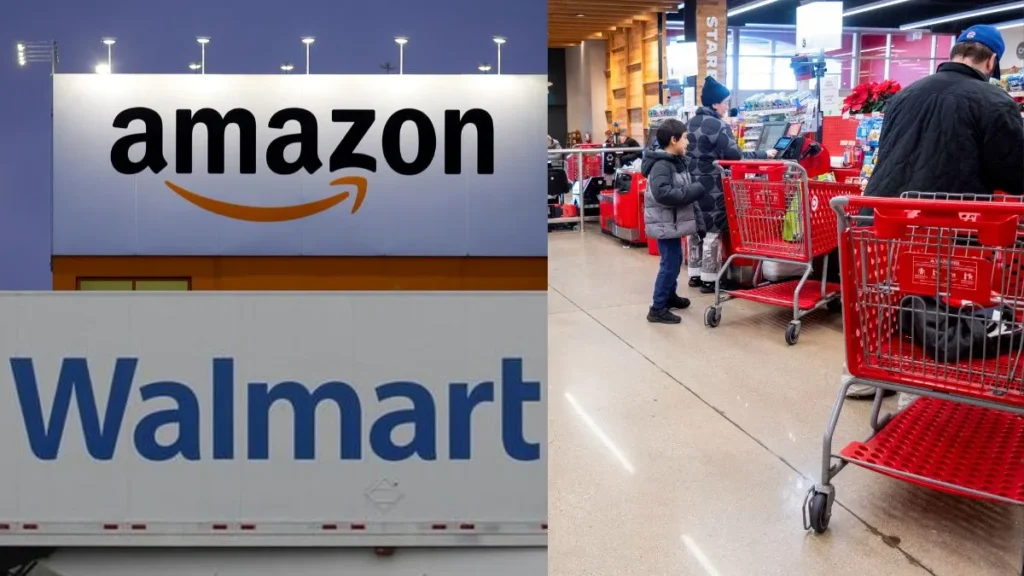Discover the inside story on Walmart layoffs 2025: Why 1,500 jobs were cut, which departments are affected, and what this means for employees, the retail industry, and the future of work. Get all the facts, reactions, and expert insights now!
Table of Contents
- Walmart Layoffs 2025: Breaking News
- Why Did Walmart Announce These Layoffs?
- Which Departments & Roles Are Affected?
- Official Statement: Walmart’s Internal Memo
- How Will This Impact Employees?
- Walmart’s Strategy: Streamlining for the Future
- Social Media Backlash & Visa Policy Debate
- Walmart’s Global Workforce: Key Stats
- The Bigger Picture: Retail Industry Layoffs
- Expert Opinions: What’s Next for Walmart?
- How Should Employees Respond?
- Frequently Asked Questions (FAQs)
- Conclusion: The Road Ahead for Walmart & Retail
Walmart Layoffs 2025: Breaking News

Walmart, the world’s largest retailer and America’s biggest private employer, has announced a major round of layoffs in May 2025. The announcement of Walmart layoffs 2025 has sent shockwaves through the retail industry, with approximately 1,500 corporate jobs set to be cut as part of a sweeping restructuring effort. The move has also sparked heated debates online.
Why Did Walmart Announce These Layoffs?

One of the main reasons behind the Walmart layoffs 2025 is the company’s ongoing restructuring efforts. The layoffs are part of Walmart’s strategic plan to “streamline operations, shave expenses, and enable faster decision-making.” According to an internal memo cited by Reuters, the company believes this restructuring will help it adapt to a rapidly changing business environment and maintain its competitive edge in the future of retail.
Key reasons cited include:
- Simplifying operations for greater efficiency
- Cutting costs amid global economic pressures
- Accelerating innovation and digital transformation
- Responding to evolving consumer behaviors and market trends
Which Departments & Roles Are Affected?
The job cuts are not limited to a single area but span several crucial divisions:
- Global Technology Division: Roles in IT, software engineering, and tech support are being eliminated as Walmart shifts its digital strategy.
- E-Commerce Fulfillment: Employees in logistics, online order processing, and fulfillment centers are impacted, reflecting changes in how Walmart handles online sales.
- Advertising Arm (Walmart Connect): Marketing, sales, and digital advertising positions are also being restructured or cut.
- The Walmart layoffs 2025 will impact several departments, including technology and e-commerce fulfillment.
While certain positions are being eliminated, Walmart has indicated that new roles will also be created to align with its long-term growth strategy.
Official Statement: Walmart’s Internal Memo
In the official memo, Walmart leadership emphasized the need to “sharpen our focus” to deliver the experiences that will define the future of retail. The company stated:
“To accelerate our progress delivering the experiences that will define the future of retail, we must sharpen our focus.”
This statement underscores Walmart’s intention to remain a leader in retail innovation, even if it means making tough decisions in the short term.
How Will This Impact Employees?
The immediate impact is significant for the 1,500 employees receiving layoff notices. Those affected are primarily in corporate and technical roles, rather than frontline retail positions. The Walmart layoffs 2025 are expected to create uncertainty among employees, especially as Walmart has not publicly disclosed the severance packages or support programs for those impacted. However, such layoffs often include career transition assistance and outplacement services.
Broader Employee Concerns
- Job security fears among remaining staff
- Uncertainty about future restructuring or automation
- Concerns over workload redistribution and morale
Walmart’s Strategy: Streamlining for the Future
Walmart’s restructuring is not just about cost-cutting. The company is actively shifting resources to areas with higher growth potential, such as:
- Advanced technology and automation
- Enhanced e-commerce platforms
- Data-driven marketing and customer experience
- Supply chain optimization
By eliminating some roles and creating new ones, Walmart aims to “future-proof” its workforce and operations.
Social Media Backlash & Visa Policy Debate

The layoffs have ignited a firestorm on social media, with critics questioning Walmart’s hiring practices—especially regarding the H-1B visa program. Some users allege that Walmart is replacing American workers with foreign labor, particularly in tech roles.
“Oh, guess what? The large layoffs today at Walmart are from its technology team. You know, the kind of US worker who’s replaced by H1B.” – Social media user
The H-1B visa program, which allows US employers to hire foreign workers in specialty occupations, has long been controversial. Reports suggest Walmart and its contractors rely heavily on H-1B visas for IT labor, sparking debates about worker vulnerability, wage suppression, and citizenship pathways for foreign workers.
Walmart’s Global Workforce: Key Stats
- US Employees: ~1.6 million
- Worldwide Employees: ~2.1 million
- Biggest US Private Employer
- Largest US Importer: Nearly 60% of Walmart’s shipments (clothing, electronics, toys) are sourced from China.
These numbers highlight the massive scale at which Walmart operates—and the ripple effects any restructuring can have.
The Bigger Picture: Retail Industry Layoffs
Walmart is not alone in announcing layoffs. The retail sector has seen a wave of job cuts in response to:
- Technological disruption and automation
- Shifts in consumer spending and e-commerce growth
- Global economic uncertainty and supply chain challenges
Walmart’s move is seen as both a response to these pressures and a signal of broader changes coming to the retail workforce.
Expert Opinions: What’s Next for Walmart?
Industry analysts suggest that Walmart’s restructuring is a proactive step to stay ahead of the curve. By investing in technology and streamlining operations, Walmart aims to:
- Enhance customer experiences
- Maintain competitive pricing
- Drive long-term profitability
However, experts warn that repeated rounds of layoffs can damage employee morale and brand reputation if not managed transparently and compassionately.
How Should Employees Respond?
If you are a Walmart employee or work in the retail sector, here are some steps to consider:
- Stay informed about company updates and restructuring plans
- Seek clarity from HR regarding your role and future opportunities
- Update your resume and LinkedIn profile
- Explore upskilling or reskilling in high-demand areas (e.g., tech, data analytics)
- Connect with professional networks and career support services
Frequently Asked Questions (FAQs)
Q1: Why is Walmart laying off employees in 2025?
A: Walmart is restructuring to streamline operations, cut costs, and accelerate innovation, impacting 1,500 corporate jobs.
Q2: Which departments are most affected?
A: The layoffs impact Walmart’s global technology division, e-commerce fulfillment, and advertising unit (Walmart Connect).
Q3: Will Walmart create new jobs after these layoffs?
A: Yes, Walmart plans to create new roles aligned with its growth strategy, even as it eliminates others.
Q4: What is the controversy around H-1B visas?
A: Critics allege Walmart is replacing US workers with foreign labor via the H-1B program, sparking debates about labor policy and worker rights.
Q5: How many people does Walmart employ?
A: Walmart employs about 1.6 million people in the US and 2.1 million globally.
Conclusion: The Road Ahead for Walmart & Retail

Walmart’s 2025 layoffs mark a pivotal moment for both the company and the broader retail industry. As Walmart adapts to new market realities, its decisions will shape the future of work, technology, and consumer experiences. Employees, industry watchers, and policymakers will be closely monitoring how Walmart balances innovation with its responsibilities as a major employer.
For now, the message is clear: Change is coming fast—and those who adapt will define the next chapter of retail.









